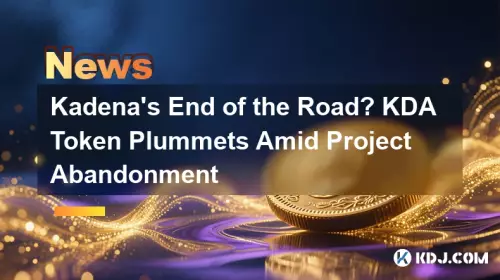 |
|
 |
|
 |
|
 |
|
 |
|
 |
|
 |
|
 |
|
 |
|
 |
|
 |
|
 |
|
 |
|
 |
|
 |
|
지분 증명으로의 전환은 과도한 중앙 집중화에 대한 우려를 불러일으켰습니다. 분산화에 대한 약속을 재확인함으로써 블록체인은 목표를 실현할 수 있습니다.

The United States Securities and Exchange Commission dropped charges against the Ethereum blockchain in June 2023, a pivotal moment in the platform’s journey toward greater maturity and acceptance in the financial world.
미국 증권거래위원회는 2023년 6월 이더리움 블록체인에 대한 기소를 취하했습니다. 이는 금융계에서 더 큰 성숙과 수용을 향한 플랫폼의 여정에서 중추적인 순간이었습니다.
For those who didn’t follow the case, the SEC believed ether (ETH) was sold as an unregistered stock, with concerns that it was being sold without following certain rules and protocols. However, Ethereum’s proponents argued that, since the network is decentralized, it does not meet the criteria of an investment contract or security.
사건을 따르지 않은 사람들을 위해 SEC는 이더리움(ETH)이 미등록 주식으로 판매되었으며 특정 규칙과 프로토콜을 따르지 않고 판매되고 있다고 믿었습니다. 그러나 이더리움 지지자들은 네트워크가 분산되어 있기 때문에 투자 계약이나 보안 기준을 충족하지 못한다고 주장했습니다.
While the SEC may have decided against direct legal action, it did open the door for further discussions around centralization. Some technological aspects of Ethereum’s architecture have stimulated an important dialogue around contracting power among influential entities. While these discourses are mainly internal, addressing these concerns can enhance the network’s upgrade goals and support true decentralization.
SEC는 직접적인 법적 조치를 취하지 않기로 결정했을 수도 있지만 중앙화에 대한 추가 논의의 여지를 열었습니다. 이더리움 아키텍처의 일부 기술적 측면은 영향력 있는 주체 간의 권력 계약에 관한 중요한 대화를 자극했습니다. 이러한 담론은 주로 내부적으로 이루어지지만 이러한 문제를 해결하면 네트워크의 업그레이드 목표를 향상하고 진정한 분산화를 지원할 수 있습니다.
This is especially true as the network tries to embody the ideals of “Ethereum 2.0,” the stronger, more accessible, and more practical version of its token and infrastructure. Some say it’s already here, while others point out gaps that still need to be filled to definitively claim its arrival.
이는 네트워크가 토큰과 인프라의 더 강력하고, 더 접근하기 쉽고, 더 실용적인 버전인 "이더리움 2.0"의 이상을 구현하려고 시도할 때 특히 그렇습니다. 어떤 사람들은 그것이 이미 여기에 있다고 말하는 반면, 다른 사람들은 그 도착을 확실히 주장하기 위해 아직 채워져야 할 격차를 지적합니다.
Yes, Ethereum 2.0 holds significant potential for transforming DeFi and the broader ecosystem, but we can’t just have a foot halfway through the door. To reach its full potential, key developments still have to be reached.
예, Ethereum 2.0은 DeFi와 더 넓은 생태계를 변화시킬 수 있는 상당한 잠재력을 가지고 있지만 우리는 문을 절반만 통과할 수는 없습니다. 잠재력을 최대한 발휘하려면 여전히 주요 개발에 도달해야 합니다.
Validator centralization
검증인 중앙화
By transitioning to a proof-of-stake (PoS) mechanism in September 2022, Ethereum now allows validators to stake ETH, with large stakes increasing validation chances and rewards. This upgrade clearly underscores Ethereum’s key role in DeFi by sparking countless innovative financial tools being created on the network for lending and trading, among other use cases.
2022년 9월 지분 증명(PoS) 메커니즘으로 전환함으로써 이더리움은 이제 검증인이 ETH를 스테이킹할 수 있도록 허용하며, 큰 지분을 보유하면 검증 기회와 보상이 늘어납니다. 이번 업그레이드는 다른 사용 사례 중에서도 대출 및 거래를 위해 네트워크에서 생성되는 수많은 혁신적인 금융 도구를 촉발함으로써 DeFi에서 이더리움의 핵심 역할을 분명히 강조합니다.
However, emphasizing token ownership over the number of validators could potentially concentrate power among smaller groups, going against crypto’s ethos of decentralization. Moreover, staking requires an input of 32 ETH, meaning that validators with significant ETH staked can wield disproportionate influence over network governance and decision-making processes. This creates a feedback loop that favors certain participants, and can lead to power and wealth accumulating in the hands of a few individuals.
그러나 검증인의 수보다 토큰 소유권을 강조하는 것은 암호화폐의 분산화 정신에 어긋나면서 잠재적으로 소규모 그룹에 권력을 집중시킬 수 있습니다. 또한, 스테이킹에는 32 ETH의 입력이 필요합니다. 이는 상당한 ETH를 스테이킹한 검증자가 네트워크 거버넌스 및 의사 결정 프로세스에 불균형적인 영향력을 행사할 수 있음을 의미합니다. 이는 특정 참가자에게 유리한 피드백 루프를 생성하고 소수 개인의 손에 권력과 부가 축적될 수 있습니다.
In March, Vitalik Buterin even expressed his concerns about “lazy stakers,” or those who engage solely in staking pools rather than solo staking — clearly indicating the relevance of the centralization issue.
지난 3월 Vitalik Buterin은 "게으른 스테이커", 즉 솔로 스테이킹이 아닌 스테이킹 풀에만 참여하는 사람들에 대한 우려를 표명하기도 했습니다. 이는 중앙화 문제의 관련성을 분명히 나타냅니다.
At its core, Ethereum represents a shift in the way financial services are designed, accessed, and utilized. However, relying on a few entities continues to introduce risks and questions about how decentralized Ethereum 2.0 really is.
핵심적으로 이더리움은 금융 서비스가 설계, 액세스 및 활용되는 방식의 변화를 나타냅니다. 그러나 소수의 주체에 의존하면 Ethereum 2.0이 실제로 얼마나 분산되어 있는지에 대한 위험과 질문이 계속해서 발생합니다.
Shifting gears to DeFi
DeFi로 기어 전환
Ethereum’s path towards centralization sets the stage for more severe complications down the line — namely with regulators and reduced network resilience. Ultimately, Ethereum’s future within DeFi and the blockchain ecosystem as a whole hinges on balancing technical advancements while limiting centralization wherever possible. And there are ways to make it achievable.
중앙화를 향한 이더리움의 길은 규제 기관과 네트워크 탄력성 감소로 인해 더 심각한 문제가 발생할 수 있는 무대를 마련합니다. 궁극적으로 DeFi와 블록체인 생태계 전체에서 이더리움의 미래는 가능한 한 중앙 집중화를 제한하면서 기술 발전의 균형을 맞추는 데 달려 있습니다. 그리고 그것을 달성할 수 있는 방법도 있습니다.
If implemented correctly, concepts like rainbow staking could further enhance Ethereum’s adaptability while also combatting centralization. In essence, rainbow staking allows users to stake ETH across multiple pools and strategies simultaneously, effectively creating a “rainbow of rewards”, so to speak, that stakers receive while mitigating anti-competitive risks and building a more resilient ecosystem. The ETH validation process is separated into “heavy” and “light” staking — with “heavy” focusing on validation services for finalization and “‘light” staking zeroing in on censorship resistance of transactions.
올바르게 구현된다면 레인보우 스테이킹과 같은 개념은 중앙 집중화에 맞서면서 이더리움의 적응성을 더욱 향상시킬 수 있습니다. 본질적으로 레인보우 스테이킹을 통해 사용자는 여러 풀과 전략에 걸쳐 ETH를 동시에 스테이킹할 수 있으며, 말하자면 스테이커가 반경쟁적 위험을 완화하고 보다 탄력적인 생태계를 구축하는 동시에 받을 수 있는 "보상의 무지개"를 효과적으로 생성할 수 있습니다. ETH 검증 프로세스는 "헤비" 스테이킹과 "라이트" 스테이킹으로 구분됩니다. "헤비" 스테이킹은 마무리를 위한 검증 서비스에 초점을 맞추고 "'라이트" 스테이킹은 거래의 검열 저항에 초점을 맞춥니다.
For example, liquid staking protocols like Lido or Rocket could offer heavy service staking, while existing stakers can opt to run light service operators. Rainbow staking will eventually result in a more efficient and competitive network while granting more liquid staking provider diversity. However, executing it won’t be easy and could add confusion to the overall staking structure.
예를 들어 Lido 또는 Rocket과 같은 유동 스테이킹 프로토콜은 대규모 서비스 스테이킹을 제공할 수 있는 반면 기존 스테이커는 가벼운 서비스 운영자를 운영하도록 선택할 수 있습니다. Rainbow 스테이킹은 궁극적으로 더 효율적이고 경쟁력 있는 네트워크를 제공하는 동시에 보다 유동적인 스테이킹 제공자 다양성을 제공할 것입니다. 그러나 이를 실행하는 것은 쉽지 않으며 전체 스테이킹 구조에 혼란을 더할 수 있습니다.
Beyond rainbow staking, Ethereum could leverage network-wide advancements already introduced in its initial 2.0 updates, like sharding. While sharding has been scrutinized for its security issues, justifying the shift to Layer 2 and zero-knowledge developments, that doesn’t mean the technology should be outright abandoned.
레인보우 스테이킹 외에도 이더리움은 샤딩과 같이 초기 2.0 업데이트에 이미 도입된 네트워크 전반의 발전을 활용할 수 있습니다. 샤딩은 보안 문제로 면밀히 조사되어 레이어 2 및 영지식 개발로의 전환을 정당화하지만 이것이 해당 기술을 완전히 포기해야 한다는 의미는 아닙니다.
We have seen evolutions here thanks to developments like “danksharding” specifically for Layer 2s. Danksharding involves proposer-builder separation (PBS), a deviation from how Ethereum validators function now — proposing and broadcasting blocks entirely on their own. Instead, PBS shares the love and splits up these tasks among multiple validators.
우리는 특별히 Layer 2를 위한 "danksharding"과 같은 개발 덕분에 발전을 목격했습니다. Danksharding에는 제안자-구축자 분리(PBS)가 포함됩니다. 이는 현재 이더리움 검증인이 작동하는 방식에서 벗어나 완전히 자체적으로 블록을 제안하고 브로드캐스팅하는 것입니다. 대신 PBS는 사랑을 공유하고 이러한 작업을 여러 검증자에게 나누어줍니다.
Ultimately, danksharding helps implement data availability, allowing validators to verify blob data quickly and efficiently, while simultaneously identifying missing data.
궁극적으로 danksharding은 데이터 가용성을 구현하는 데 도움이 되므로 검증인은 Blob 데이터를 빠르고 효율적으로 확인하는 동시에 누락된 데이터를 식별할 수 있습니다.
The aim here is to make transactions on Layer 2 as cheap as possible for users and scale Ethereum to validate over 100,000 transactions per second. This would allow dApps such as Uniswap to process transactions at a significantly lower cost with quicker transaction approval times.
여기서 목표는 사용자를 위해 레이어 2에서 트랜잭션을 최대한 저렴하게 만들고 이더리움을 확장하여 초당 100,000개 이상의 트랜잭션을 검증하는 것입니다. 이를 통해 Uniswap과 같은 dApp은 더 빠른 거래 승인 시간과 함께 훨씬 낮은 비용으로 거래를 처리할 수 있습니다.
However, danksharding’s highly technical infrastructure and implementation leave out smaller rollups and potentially encourage centralization. So, while
그러나 danksharding의 고도로 기술적인 인프라와 구현은 더 작은 롤업을 생략하고 잠재적으로 중앙 집중화를 장려합니다. 그래서, 동안
부인 성명:info@kdj.com
제공된 정보는 거래 조언이 아닙니다. kdj.com은 이 기사에 제공된 정보를 기반으로 이루어진 투자에 대해 어떠한 책임도 지지 않습니다. 암호화폐는 변동성이 매우 높으므로 철저한 조사 후 신중하게 투자하는 것이 좋습니다!
본 웹사이트에 사용된 내용이 귀하의 저작권을 침해한다고 판단되는 경우, 즉시 당사(info@kdj.com)로 연락주시면 즉시 삭제하도록 하겠습니다.






























































